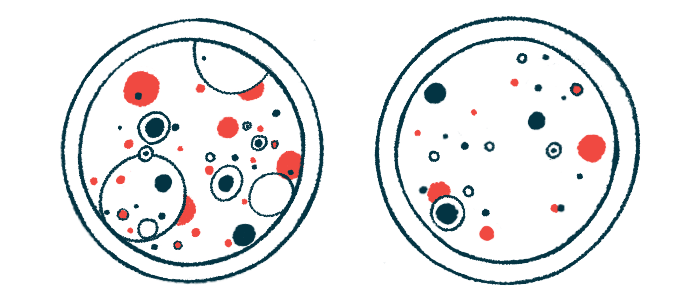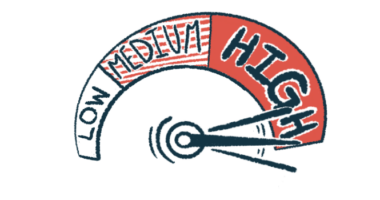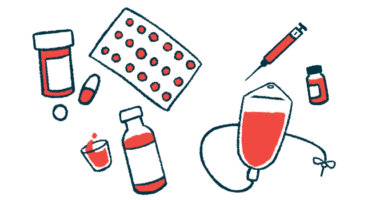Antimicrobial webs called NETs may help monitor AAV in patients: Study
Higher NET-inducing activity found in AAV, linked to higher relapse risk

Measuring neutrophil extracellular traps (NETs) — a type of antimicrobial web produced by immune neutrophil cells — induced by blood samples could be a useful way of monitoring the course of ANCA-associated vasculitis (AAV), a study shows.
Compared with blood from people without the disease, blood from AAV patients showed higher NET-inducing activity, which was decreased upon immunosuppressive treatment. Also, increases in NET formation despite treatment was associated with a higher risk of relapse.
In patients with kidney involvement, NETs were found in areas of inflammatory kidney lesions.
Taken together, the findings highlight that “quantification of NET-inducing activity can be helpful for monitoring disease activity, response to treatment and risk for relapsing disease” in AAV patients, researchers wrote.
The study, “Assessment of longitudinal serum neutrophil extracellular trap–inducing activity in anti-neutrophil cytoplasmic antibody–associated vasculitis and glomerulonephritis in a prospective cohort using a novel bio-impedance technique,” was published in Kidney International.
Neutrophils are immune cells that respond first to injury or infection
AAV refers to a group of autoimmune diseases marked by the production of ANCAs, or self-reactive antibodies that cause damage to small blood vessels. They do so by binding to proteins in neutrophils and over-activating these cells.
Neutrophils are immune cells that serve as first responders to an injury or infection. One of its defense mechanisms is the formation of NETs, a type of antimicrobial web that traps and kills microbes.
Research indicates that overactivity of neutrophils in AAV causes excessive NET production, leading to the release of pro-inflammatory molecules that drive blood vessel damage.
In addition, among the many antimicrobial molecules present in NETs are proteinase 3 and myeloperoxidase proteins, the most common targets of ANCAs, perpetuating the damaging autoimmune processes in AAV.
As such, NET formation may be a good biomarker for monitoring disease flares and treatment responses in AAV patients.
To learn more about NET dynamics in AAV, a team of researchers in Maastricht, in the Netherlands, developed a novel bioimpedance technique to accurately measure the NET-inducing activity of a person’s blood. Bioimpedance is defined as the response of a biological tissue to an externally applied electric current.
Treatment effectively reduces serum NET-inducing activity, which is low during remission and is a potentially useful technique to monitor patients during follow-up.
NETs measured in blood samples from 62 AAV patients and 14 healthy controls
In the new test, lab-grown healthy human neutrophils were incubated with a person’s blood sample, and the cells’ capacity to form NETs was then measured by changes in their ability to impede electric current.
After validating their approach, the scientists used it on blood samples from 62 people (38 men and 24 women) with active AAV and 14 healthy people (six men and eight women), who served as a control group.
All patients, with a mean age of 63 years, were participating in the PROspective MAastricht VAsculitis Study between April 2019 and June 2021. Among them, 35 had newly-diagnosed AAV and 27 had relapsing disease.
In terms of AAV types, most patients (68%) had granulomatosis with polyangiitis, and 32% had microscopic polyangiitis (MPA). Kidney (38 people) and lung (31 people) involvement were the most common disease manifestations.
Blood samples were collected at diagnosis of active AAV (baseline), and for more than 80% of patients, again after six weeks of treatment and after six months of treatment.
At the baseline measurement, blood from active AAV patients resulted in a significantly greater NET formation relative to blood from healthy controls. Samples from three-quarters of AAV patients (75.8%) were positive for NET formation.
Elevated NET formation was associated with the MPA type, the presence of ANCAs against myeloperoxidase — more commonly seen in MPA patients — and markers of worse kidney function.
NET formation dropped significantly after six weeks and six months of treatment in AAV patients, regardless of which treatment they used.
Over the course of follow-up, 14 people relapsed, six developed kidney failure, and five people died.
Of the 44 patients with available data at all time points, five saw an increase in NET formation at six months relative to the six-week time point, three of whom (60%) had a relapse during follow-up.
NET increase in first 6 months of treatment linked to 11 times higher relapse risk
In contrast, 26% of the 29 people who did not see an increase in NET formation experienced a relapse. Ultimately, a NET increase in the first six months of treatment was linked to a more than 11 times higher risk of relapse.
When analyzing available kidney biopsies, the team found that NETs were seen in all biopsies from AAV patients with kidney involvement, or glomerulonephritis (GN), in 20% of those from patients without GN, and in none of the biopsies from healthy controls.
Among patients with GN, NETs co-localized with active inflammatory lesions in the kidneys, a finding that “underlines the importance of NET-formation in ANCA GN,” the researchers wrote.
Also, a higher number of kidney areas with NETs was strongly associated with higher NET-inducing activity of blood samples from AAV patients.
These findings highlight that AAV patient blood “has NET-inducing activity, which can effectively be measured by bioimpedance,” the team wrote, and that “treatment effectively reduces serum NET-inducing activity, which is low during remission and is a potentially useful technique to monitor patients during follow-up.”
While the specific blood components responsible for prompting NET formation weren’t identified, the scientists hypothesized that a collection of different proteins are sensed by neutrophils to coordinate the response.
“Future studies could use bio-impedance to elucidate which [blood] components are essential for NET formation in AAV,” the researchers wrote.








